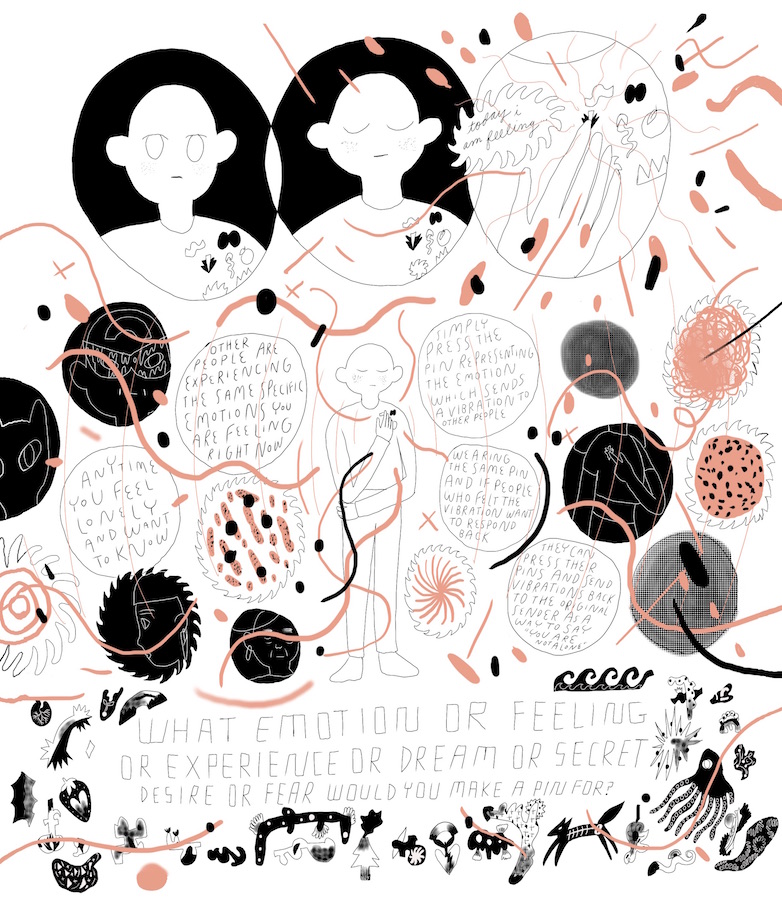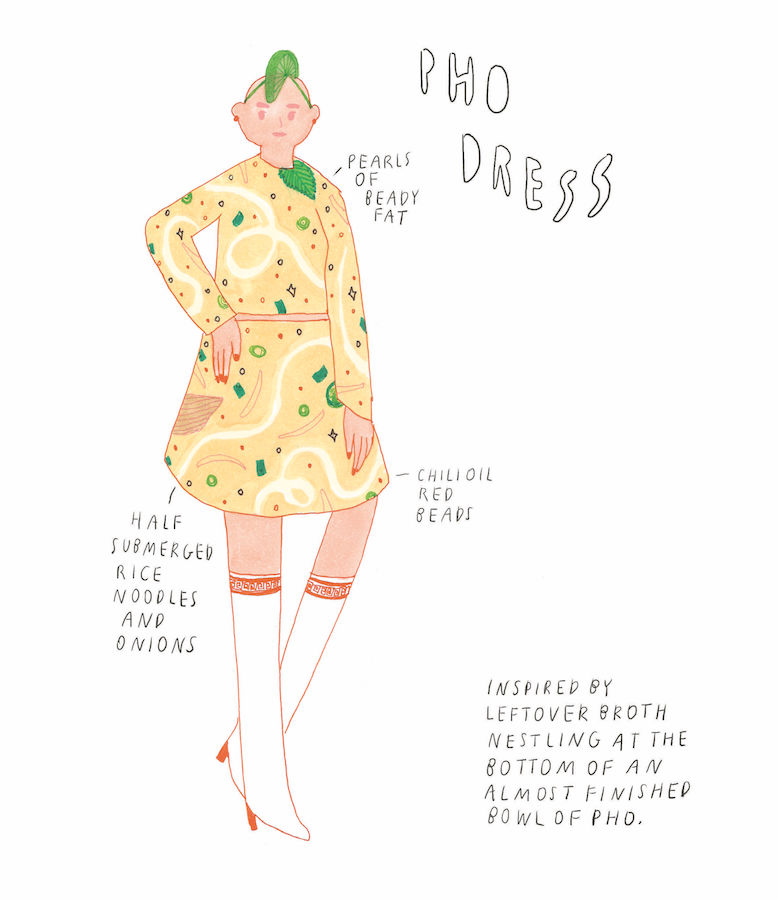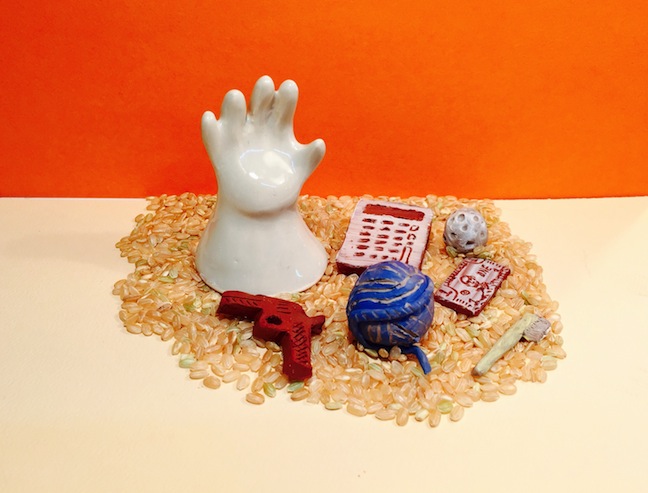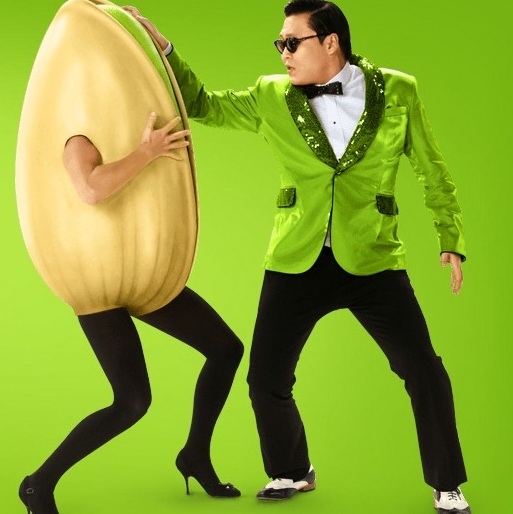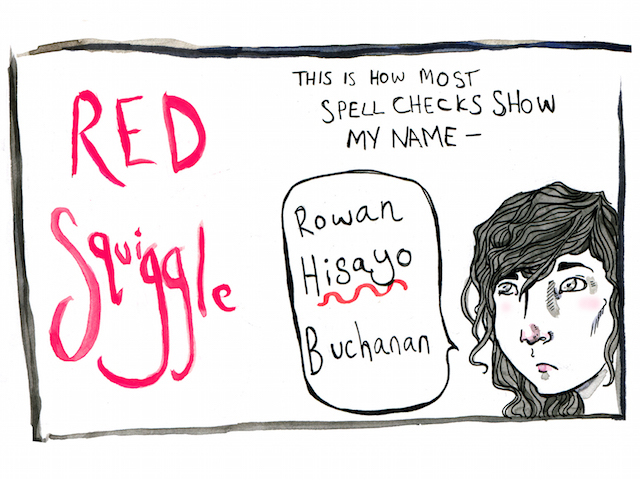The illustrator and comic artist talks the spiritual side of fashion, pho dresses, Claudia Kishi as an Asian American style icon, and her new book, Fashion Forecasts.
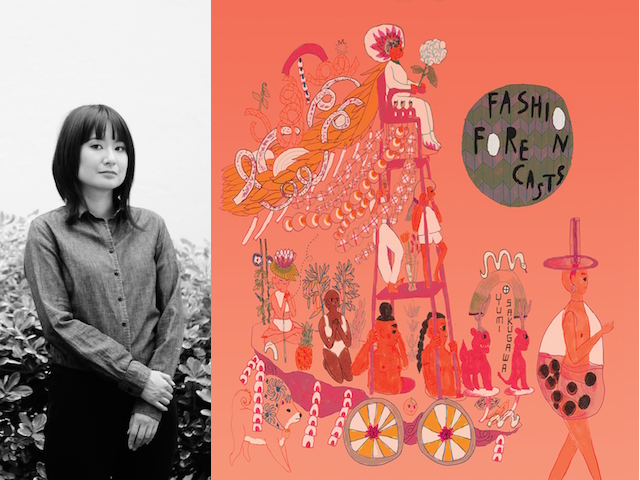
December 6, 2018
Yumi Sakugawa is a comic book artist based in Los Angeles. The author of seven books and many more zines and comics, Sakugawa has written and illustrated on such wide-ranging topics as the meaning of friendship in the digital age, DIY interior design and lifestyle hacks, self-improvement and spirituality through meditation, and idolizing Claudia Kishi, the Japanese American teenage sartorialist, infamous cacographer, and junk food hoarder from Ann M. Martin’s beloved Baby-Sitters Club series.
Sakugawa’s latest book, Fashion Forecasts (Retrofit Books), presents readers with a curiously conceived universe that’s radically feminist, politically and environmentally conscious, queer friendly, sex positive, and gender fluid. The project arose from her collaboration with the Smithsonian Asian Pacific American Center’s CrossLines exhibition in 2016, which convened more than forty Asian American artists, performers, and scholars to engage in dialogue on intersectional identities. The beautifully rendered drawings in Fashion Forecasts encourage readers to imagine a future of dressing and accessorizing that reflects intersectional feminism and personal creative freedom. Sakugawa reminds us that how we choose to daily adorn our bodies can be a ritual that calls forth ancestral history and an empowered sense of self.
—Jean Chen Ho
The first page of the book is a reproduction of an Instagram post: a few drawings you made and the caption “A while back I was bored and made fashion forecasts.” Is this how you got started with this project?
Yes, that was the first iteration. I’ve always loved drawing outfits. Any time I’m itching for an identity change, I draw what the next phase of my fashion’s going to look like: the hairstyle I want, the clothes I want to wear. But that [Instagram post] was my first time riffing on how ridiculous fashion can be and also how much I love it. Because I love clothes, I’m frustrated with the state of fashion. I just felt this need to poke fun at it! To create a future forecast where I want fashion to be more inclusive and weird and Asian American.
So much of the book is wildly imagined, over-the-top humorous, and beautifully fantastical. But is there something realistic and translatable that you want your readers to take away? A way to incorporate these ideas into the clothes we put on our backs every day?
The common theme is that you’re treating your body and your own physical space as this makeshift shrine. You’re a shrine to yourself, your heritage, your ancestors, the nature around you. So even if my drawings are the extreme, impractical versions of this idea, I still want that spirit to be transmitted to my readers. Even if you’re not actually wearing burning incense sticks on your nails, you could choose talismans that are important specifically to you, signifiers that charge your day to day existence, your energetic aura.
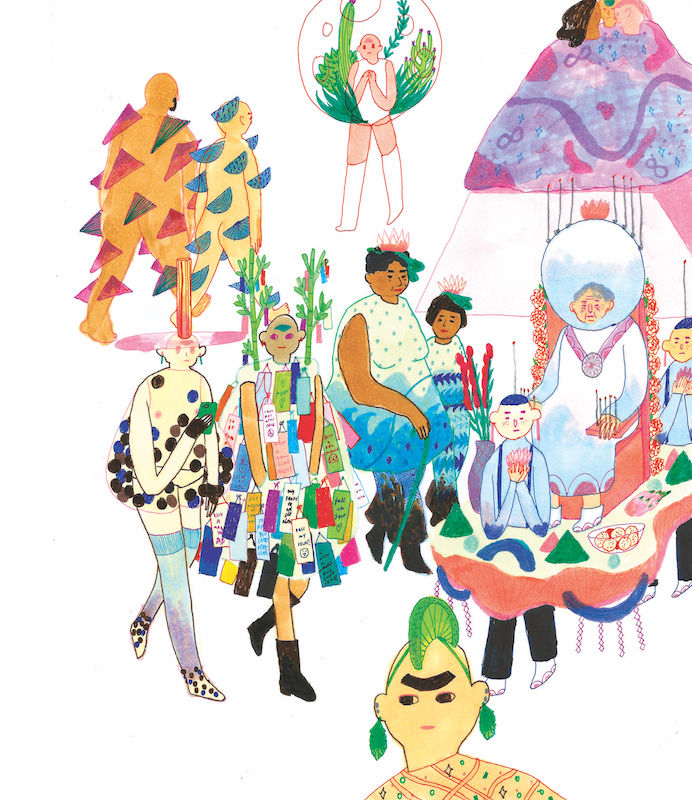
The book is divided up into several sections of drawings: Face Hair Body; Food Inspired; Family/Elderly/Ancestral Worship; Plant Life Environment; Spirituality/Mythology; Community; Technology/Future; Photos from the Smithsonian exhibit; Fashion Advice (which includes meditations). Can you talk about the process of putting the book together, chapter by chapter?
All of the sections before the photo images were in the original zine that I created for the Smithsonian Asian Pacific American Center exhibit. Adriel Luis, the Smithsonian curator, had reached out in 2015 and said he was doing a pop-up around intersectionality and identity. He asked if I had any ideas. Fashion Forecasts was on the forefront of my mind, and almost jokingly I said, well, I’m doing these drawings that could be a vehicle for exploring Asian American identity and gender and intergenerational dialogue.
After I told Adriel my idea, I didn’t really believe that it was going to happen but then he started flying the artists out to DC and we had to start planning things. That’s when it hit me that there’s going to be an actual exhibit and I’m going to have to figure something out. So I called my friend Robbie Monsod. He now works on the costumes at the LA Opera House but before his job started, serendipitously he was available, so I commissioned him to make these outfits. I made concept sketches, and he sewed the clothes.
The zine had its own limited edition run of about 1,000 copies which was distributed at the event. I wasn’t necessarily expecting things to extend beyond the DC pop-up. About a year later, Adriel had the idea to bring back the Fashion Forecasts exhibit to Pearl River Mart in New York, a multi-generational Asian American business, at its new location. From there, Fashion Forecasts evolved to its current iteration as a book. I wanted to include photos from the DC exhibit, bring in both new material, and also material I’d wanted to include in the original zine but didn’t have time to finish. Also I wanted to meditate more on how fashion can be a spiritual practice, even though it has that shallow side of being tied to capitalism, consumerism, unrealistic beauty standards, Western ideals. There is also the spiritual mindfulness aspect that I was drawn to when I started being more conscious of fashion. I wanted to include that in the book, which was the last section.
How did you make that connection? Seeing the spiritual side of fashion?
For most of my life, I saw fashion as this exclusive club that I couldn’t get into. There’s this hierarchy: the prettiest and the richest, the most popular, they were fashionable and everyone else was trying to emulate them. I felt like an outsider. But tied into my getting into witchcraft, getting in touch with divine feminine energy, I started to see fashion not as this oppressive tool to keep women down, but that it could be a powerful armor if you’re intentional about what you’re wearing, how you want to present yourself, why you want to wear certain things. I was coming more into my own power and agency, in a more feminine way.
One of your idols (and mine, and for a lot of Asian American girls who grew up in the ’90s) is Claudia Kishi, from the Baby-Sitters Club. I feel as if her sartorial spirit is all over this book.
Oh, definitely. Claudia elevated everyday fashion into this avant-garde, almost performance art piece, right? I feel like on a subliminal level, Claudia’s always spiritually guiding me in all things fabulous and fashion related.
The community capes are some of my favorite drawings in the book. What inspired you to create the two versions? Why was it important to have a cape for contemplative silence as well as one for generating dialogue?
There was a community cape at the Smithsonian exhibit, which was created to be worn by three people at the same time. In the zine there are two versions of the cape. There’s the silence cape—you and two other people sit and share the space together. You’re not obligated or pressured to talk. I’m an introvert and sometimes—well, almost all the time—I enjoy being in public spaces but I don’t necessarily want to have small talk or conversation with people. I like the idea of this three-person space where it’s democratized by the intention of having to be silent. There’s something meaningful about having the ability to sit in silence but still sharing space with someone, which can be an intimate thing.
Then there’s the dialogue cape, and you’re wearing it with two other people in conversation. And strangers did meet each other! It was really interesting to see what combinations of people passed through who wore the cape together.
Part of why I love this book is that it’s pointedly Asian American in a way that feels very southern California. For example, I loved the obon festival dress! I’m not Japanese American, but I’ve gone to obons with friends, and maybe I don’t know all the dances, but being in that environment feels like that I can be part of the community even if it’s not my specific cultural ethnicity. This books feels inclusive of a joyful pan-Asian American identity that’s very real and exists naturally in LA. I also appreciated how your characters are an array of brown and yellow and gold skin tones.
I’m so glad you brought that up. There are certain aspects of my drawings that are specifically Japanese American, but I also felt like I related just as much to making outfits about boba, which comes from Taiwanese culture, and kimchi, and pho. Those things are woven into the fabric of my upbringing as much as obon festivals. I did grow up in southern California, in Orange County, with a lot of Asian American friends. That shared visual language of seeing ancestral shrines at friend’s houses, eating different Asian foods at a friend’s family gathering. That just feels like home, as much as being Japanese American.
I was so moved by the section on Aging. Our standards for what’s considered “beautiful” often mean someone young and able-bodied. For example, you drew a celebration cape that can only be worn after age sixty, and glitter that celebrates new wrinkles.
I have so much reverence for the elderly, it’s this wonderful accomplishment to live a long life. I also had this feeling of injustice about how after a certain age, women suddenly become invisible, like they’re not allowed to wear audacious, fabulous clothes. I wanted to cast this spell for my future self, to remind myself that I still want to have fun with fashion and clothing and beauty no matter how old I am. I want everyone to have that state of mind. We can still be playful and joyful, exactly as we are, without having to conform to a youth-obsessed culture.
Do you have a favorite look in the book?
I think I always go back and forth between the pho dress and the ancestral shrine outfit. I like the idea of ancestral shrine outfit because I’ve been thinking a lot about how just our own existence is an embodiment of the ancestors that came before us, our unique faces and voices and bodies come from generations and generations of survival, migration, innovation. And so I like the idea of making that literal and visual, to be able to walk around on that wavelength.
The pho dress… I don’t know, I just really love pho! There’s just this security blanket feeling of wearing a food that gives you so much comfort.
You’re exhibiting at Comic Arts LA next week. What will you be doing there?
Comic Arts Los Angeles is an incredible indie comics festival that was started just a few years ago. It’s a free weekend event that’s open to the public. Comic artists locally and from out of state are tabling all weekend, sharing their books and art and merchandise. It’s such an exciting cross section of established and up-and-coming cartoonists. What I did last year, and I’m excited to do again this year, is that both mornings I’m leading a mindfulness and meditation workshop on how to get in touch with your creativity, and I always recommend everyone, especially artists, to have a daily mindfulness practice. I’m really excited to share that and talk about my creative process with as many people as possible.
This interview has been edited and condensed for clarity.


